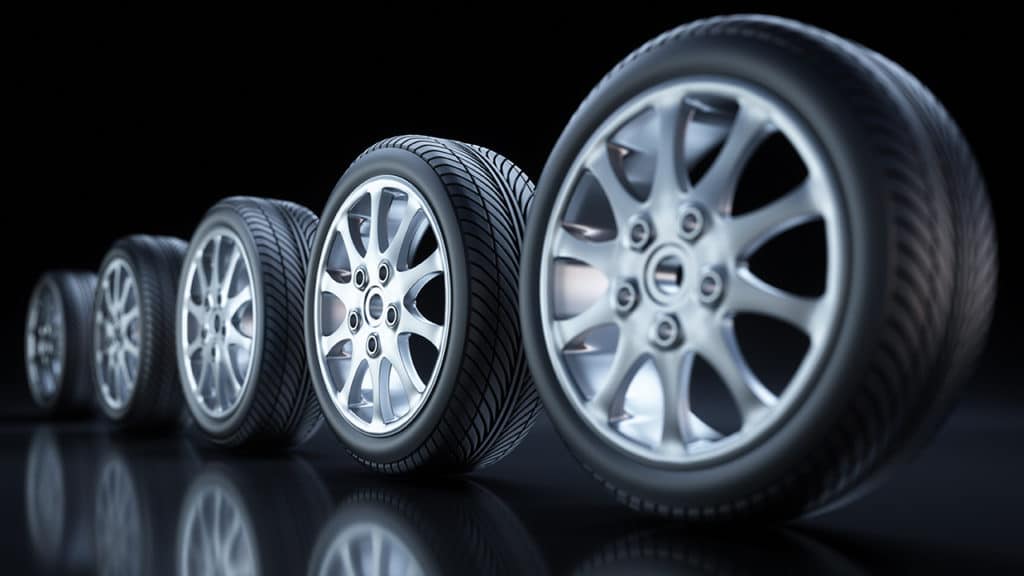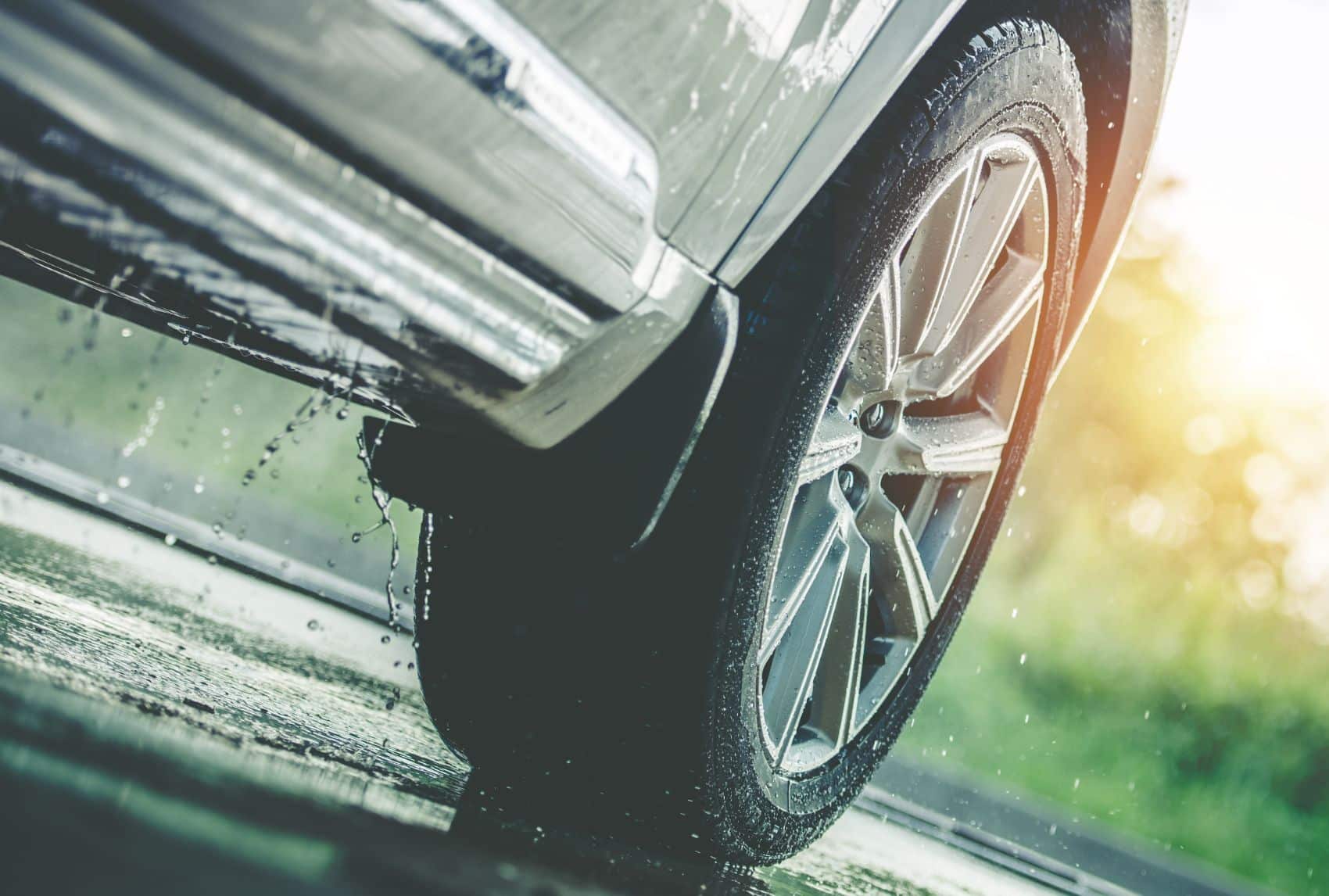When to Change Your Tires? Summary Points:
- AAA research finds our tires may need replacing sooner than we realize.
- Currently, the standards for replacement are either vague or non-existent.
- There are a few home methods you can employ to keep tabs on your tires.
Tires can be an “out of sight, out of mind” item on your vehicle, but aging tires can be hazardous, especially during rainy weather. AAA research finds that driving with worn tires on wet surfaces at highway speeds can increase stopping distances by nearly 90 feet. That’s more than the length of an eighteen-wheeler!
Tread Depth & Wet Pavement
In partnership with the Automobile Club of Southern California’s Automotive Research Center, AAA conducted testing to understand performance differences at highway speeds between new, all-season tires and those worn to a depth of 4/32″ on wet pavement. The study examined both passenger cars and light trucks (a summary PDF of the study is available here). Testing was conducted at the Michelin Laurens Proving Grounds in Mountville, South Carolina.
During AAA’s testing, the passenger car exhibited an average increased stopping distance of 87 feet versus 86 feet for a light truck. The study also found a 33 percent reduction in handling for a passenger car and 28 percent for a light truck. When decelerating from 60 to zero mph, the worn tires were still moving at nearly 40 mph at the point when the new tires had already stopped.
“Tires are what keep a car connected to the road,” AAA said in a statement about its research. “Even the most advanced safety systems rely on a tire’s basic ability to maintain traction, and AAA’s testing shows that wear has a significant impact on how quickly a vehicle can come to a stop in wet conditions to avoid a crash.”
“Traction is your last line of defense,” added Brandon Grade, Service Advisor at Findlay Toyota in Henderson, Nevada, near Las Vegas. “Even the latest traction control systems can only do so much when the mechanical grip has been removed.”
When To Change Your Tires?
Current industry guidelines and state regulations often recommend tire replacement at 2/32″ depth (about 1.6 millimeters), although AAA’s research found such recommendations can vary from state to state, with some states having few, if any, guidelines at all.
Some dealerships and service shops will use 3/32″ as a precaution, encouraging customers to avoid dropping into the “legally worn” area of 2/32″ tread depth. Replacement at 3/32″ is preferable to 2/23″, but AAA’s research found that at 4/32″, stopping performance has already decreased, especially on wet pavement.
“AAA’s testing demonstrates the impact that tire tread has on safety,” said Megan McKernan, Manager of the Automobile Club of Southern California’s Automotive Research Center. “If tested side-by-side at 60 mph, vehicles with worn tires would still be traveling at an alarming 40 mph when reaching the same distance it takes for vehicles with new tires to make a complete stop.”
“As far as when to change your tires, if you can replace them at 4/32″, it’s a good idea, but the absolute lowest threshold should be at 3/32″ tread depth,” Grade said. “At that point, your tires cannot effectively remove water or keep traction.”
Newer vehicles today go significantly longer between oil changes, which opens up the possibility that drivers may not become alerted to worn tires until later than usual. In the past, when oil change intervals were between 3,000 and 5,000 miles, mechanics and technicians had more opportunities to advise their customers on the condition of their vehicle, including safety critical components like tires.
“Even if you are not due for an oil change, it’s okay to bring your vehicle into your mechanic or local service shop and have them inspect the tires if you are unsure of the tread depth,” Grade said. “That will give you a more up-to-date picture of your tires between oil changes, especially if you have a newer vehicle with longer service intervals.”
Selecting The Right Tire
While AAA’s research determined tire performance fluctuates by brand, price is not necessarily an indicator of quality, which might come as a relief to some consumers. According to AAA, once worn, performance for all tires tested deteriorated significantly, even those priced higher. AAA says to research tires carefully and never buy one brand based solely on price.
The Automoblog research team looked at the affordability, industry reputation, reliability, and tread-life warranties of major tire manufacturers and came up with a list of the best tire brands. As part of that list, our research team goes over different tire types, industry grading standards, proper tire maintenance, and how to choose the right tires based on your needs. Our research team also evaluated budget tire brands, coming up with this list of the best inexpensive tires.
If you are looking for a set of snow tires, this helpful guide on the best winter tires will point you in the right direction.
“Your vehicle might require a certain kind of tire,” Grade said. “Specifically, the Toyota Prius uses tires designed to have less rolling resistance, so those are things you will want to keep in mind when looking for new tires.”

Tips & Advice
To reduce the chances of a collision during bad weather, regardless of your tire tread depth, AAA recommends reducing your speed and avoiding sharp turns. Drivers should also keep their distance between vehicles in front of them and resist the urge to use cruise control. If you start to hydroplane, gently ease off the accelerator and steer in the direction the vehicle should go until traction is regained. Do not brake forcefully.
No matter the season, there are a few DIY home remedies you can employ to stay on top of your tires.
“Buy a tread depth gauge the next time you are out and keep it in your glove box,” Grade said. “Take measurements on the outside edge, center, and inside edge of your tires monthly, keeping in mind that 4/32″ is when to start considering a replacement set of tires.”
In the meantime, if you don’t yet have a tread depth gauge, grab some loose change. Slip an upside-down quarter between your tire tread and look at Washington’s head. If you can see all of Washington’s head, it’s time to shop for new tires.
Carl Anthony is the Managing Editor of Automoblog and the host of AutoVision News Radio and AutoSens Insights. As a respected automotive industry thought leader, Carl has appeared on numerous podcasts and radio shows, including Wrench Nation, Cars Yeah, The Car Doctor, and Brains Byte Back, in addition to appearing as a regular contributor on MotorMouth Radio on WHPC 90.3 FM. His work can also be seen and heard 24/7 on the Automoblog YouTube channel.


